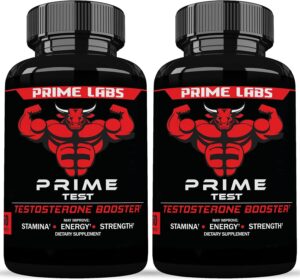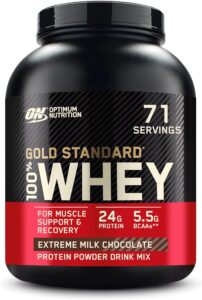
The Man Behind the Transformation
Bill Skarsgård, born on August 9, 1990, in Vällingby, Sweden, is an actor celebrated for his dynamic range and compelling performances. As the son of renowned actor Stellan Skarsgård, Bill grew up in a family deeply rooted in the performing arts, alongside his brothers Alexander, Gustaf, and Valter, who are also actors. This creative environment fostered his talent and passion for acting from an early age. Bill first garnered international attention with his chilling portrayal of Pennywise the Dancing Clown in the “It” film series, a role that showcased his ability to embody intense and complex characters, solidifying his place in the industry as a versatile and captivating performer.
Beyond his professional achievements, Bill is known for his grounded personality and dedication to his craft. He maintains a relatively private personal life, often seen enjoying the simplicity of family time away from the Hollywood spotlight. His foray into the action genre with “John Wick: Chapter 4” marks a significant shift, requiring a physical transformation to match the high-octane demands of the role.
The Challenge: Transforming for “John Wick: Chapter 4”
To portray his character in “John Wick: Chapter 4,” Bill Skarsgård needed to achieve a lean, muscular physique that could handle the film’s rigorous action sequences. This transformation required a comprehensive workout regime and a meticulously planned diet to enhance strength, agility, and endurance.
The Workout Plan
Bill’s workout plan was designed by renowned Hollywood trainer, Magnus Lygdbäck, who specializes in transforming actors for demanding roles. The regime was divided into several key components:
1. Strength Training:
– Frequency: 4-5 days a week.
– Exercises: Focused on compound movements like deadlifts, squats, bench presses, and military presses. These exercises aimed to build a solid foundation of strength and muscle mass.
– Repetitions and Sets: 4 sets of 6-8 reps for heavy lifts, ensuring progressive overload to stimulate muscle growth.
2. Functional Training:
– Frequency: 2-3 days a week.
– Exercises: Included kettlebell swings, medicine ball slams, and battle ropes. These movements enhanced Bill’s functional strength and explosive power, crucial for the dynamic fight scenes in the film.
3. Cardio and Endurance:
– Frequency: 3-4 days a week.
– Exercises: A mix of high-intensity interval training (HIIT) and steady-state cardio. HIIT sessions included sprints, cycling, and rowing, while steady-state cardio involved running and swimming to improve overall cardiovascular endurance.
4. Flexibility and Mobility:
– Frequency: Daily.
– Exercises: Incorporating yoga, stretching routines, and foam rolling to improve flexibility, reduce the risk of injury, and enhance recovery. This was essential for maintaining the agility needed for combat scenes.
The Diet Plan
Transforming physically also demanded a precise and disciplined diet plan. Bill’s diet was structured to support muscle growth, fat loss, and sustained energy levels.
1. Caloric Intake:
– Adjusted to ensure a slight caloric surplus to build muscle while maintaining lean body mass. This was closely monitored and adjusted based on his progress and filming schedule.
2. Macronutrient Breakdown:
– Protein: 1.2-1.5 grams per pound of body weight daily. Sources included lean meats, fish, eggs, and plant-based proteins.
– Carbohydrates: 2-3 grams per pound of body weight daily. Focused on complex carbohydrates like oats, brown rice, quinoa, and sweet potatoes to provide sustained energy.
– Fats: 0.3-0.4 grams per pound of body weight daily. Healthy fats from avocados, nuts, seeds, and olive oil were prioritized to support hormonal balance and overall health.
3. Meal Frequency and Timing:
Meals per Day:
– Consuming 5-6 small meals daily help maintain a steady stream of nutrients and energy throughout the day. This approach prevents energy dips, supports metabolic function, and ensures continuous muscle repair and growth.
Pre-Workout Nutrition:
– A balanced meal containing carbohydrates and protein is consumed 1-2 hours before workouts to fuel performance. Carbohydrates provide the necessary energy for intense exercise, while protein supports muscle preservation and endurance.
Post-Workout Nutrition:
– A protein-rich shake or meal is consumed within 30 minutes’ post-exercise to aid recovery and muscle synthesis. This timely intake of protein and carbohydrates helps replenish glycogen stores, repair muscle tissue, and promote faster recovery after strenuous workouts.
4. Hydration:
– Water Intake: At least 3-4 litres of water daily to stay hydrated, optimize muscle function, and promote recovery.
– Electrolytes: Supplementation with electrolytes, especially during intense training periods, to maintain hydration balance and prevent cramps.
5. Supplements:
Protein Powder:
– Used for convenient and quick post-workout nutrition, protein powder helps in repairing and building muscles by providing essential amino acids immediately after exercise, aiding in faster recovery and muscle growth.
BCAAs (Branched-Chain Amino Acids):
– BCAAs support muscle recovery and reduce soreness by preventing muscle breakdown during intense workouts. They also promote muscle protein synthesis, enhancing overall exercise performance and endurance.
Multivitamins:
– Multivitamins ensure adequate micronutrient intake, filling any dietary gaps to support overall health, immune function, and energy levels. They provide essential vitamins and minerals that might not be sufficiently obtained from diet alone.
Omega-3 Fatty Acids:
– Omega-3 fatty acids, known for their anti-inflammatory properties, support overall health by reducing inflammation, improving heart health, and enhancing cognitive function. They also aid in joint health, which is crucial for maintaining an active and intense workout regime.
Bill Skarsgård’s physical transformation for “John Wick: Chapter 4” highlights his exceptional dedication and versatility as an actor. To meet the film’s demanding physical requirements, he committed to a rigorous workout regime and a disciplined diet plan. This commitment not only sculpted his physique but also enhanced his functional strength and endurance, essential for the intense action sequences in the movie.
Skarsgård’s journey exemplifies the deep connection between fitness and performance in contemporary cinema. Actors today often need to undergo significant physical transformations to convincingly portray their characters, pushing their physical and mental boundaries in the process. Skarsgård’s ability to adapt and excel in this environment underscores his professionalism and dedication to his craft, setting a high standard for both physical and acting performance in the industry.










